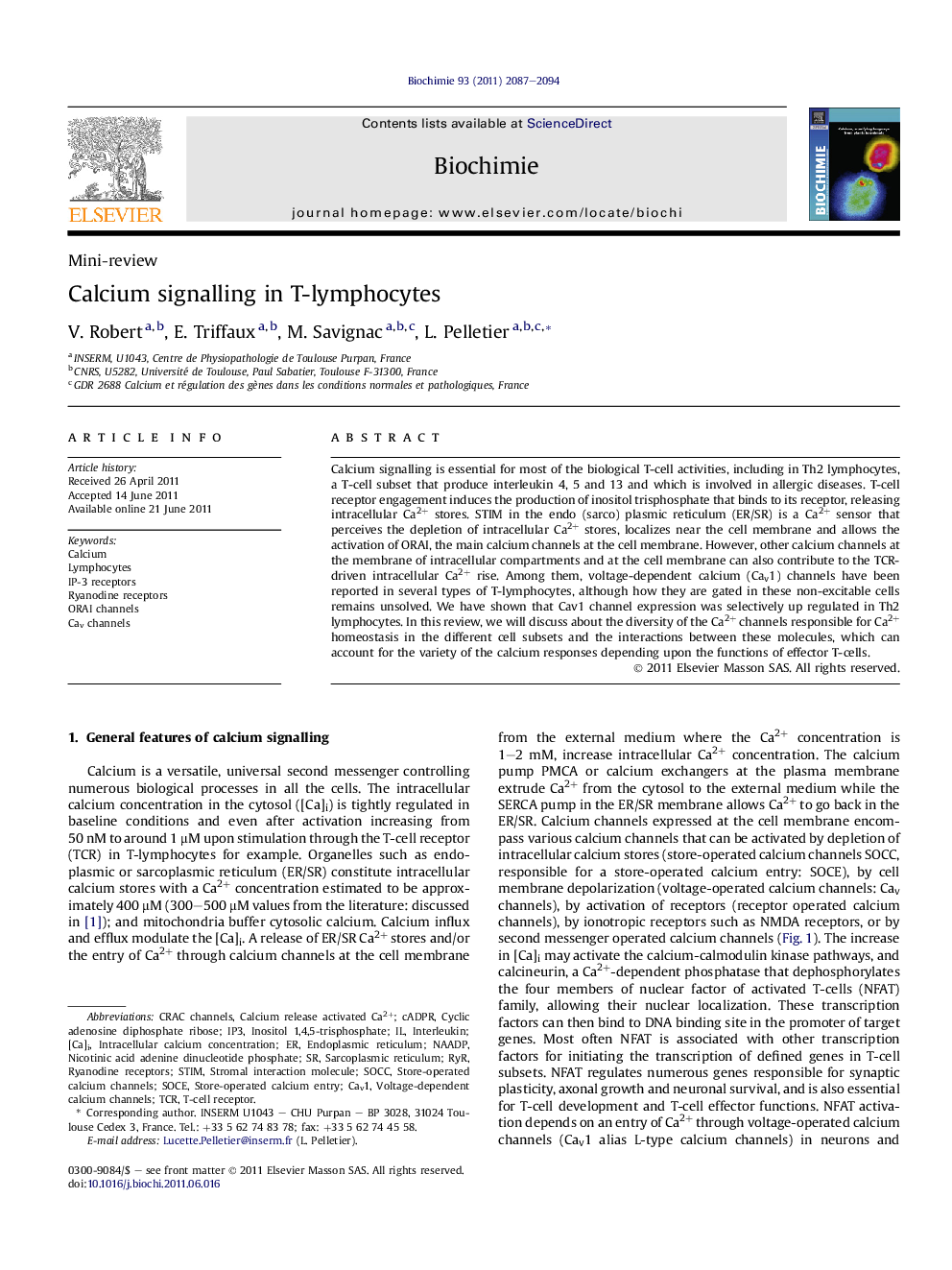| Article ID | Journal | Published Year | Pages | File Type |
|---|---|---|---|---|
| 1952204 | Biochimie | 2011 | 8 Pages |
Calcium signalling is essential for most of the biological T-cell activities, including in Th2 lymphocytes, a T-cell subset that produce interleukin 4, 5 and 13 and which is involved in allergic diseases. T-cell receptor engagement induces the production of inositol trisphosphate that binds to its receptor, releasing intracellular Ca2+ stores. STIM in the endo (sarco) plasmic reticulum (ER/SR) is a Ca2+ sensor that perceives the depletion of intracellular Ca2+ stores, localizes near the cell membrane and allows the activation of ORAI, the main calcium channels at the cell membrane. However, other calcium channels at the membrane of intracellular compartments and at the cell membrane can also contribute to the TCR-driven intracellular Ca2+ rise. Among them, voltage-dependent calcium (Cav1) channels have been reported in several types of T-lymphocytes, although how they are gated in these non-excitable cells remains unsolved. We have shown that Cav1 channel expression was selectively up regulated in Th2 lymphocytes. In this review, we will discuss about the diversity of the Ca2+ channels responsible for Ca2+ homeostasis in the different cell subsets and the interactions between these molecules, which can account for the variety of the calcium responses depending upon the functions of effector T-cells.
► The ER Ca2+ sensor STIM activate ORAI channels at the cell membrane upon TCR stimulation. ► Intracellular Ca2+ regulation depends on the type of effector T-cells. ► Besides ORAI, other Ca2+ channels contribute to calcium signalling in T-cells.
